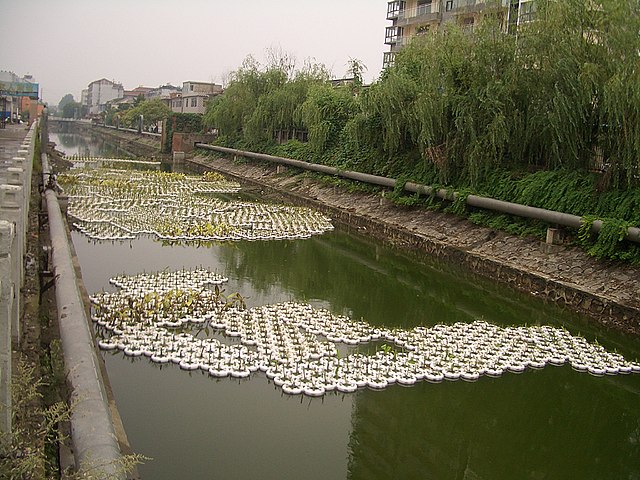Mariculture, sometimes called marine farming or marine aquaculture, is a specialized branch of aquaculture involving the cultivation of marine organisms for food and other animal products, in enclosed sections of the open ocean, fish farms built on littoral waters, or in artificial tanks, ponds or raceways which are filled with seawater. An example of the latter is the farming of marine fish, including finfish and shellfish like prawns, or oysters and seaweed in saltwater ponds. Non-food products produced by mariculture include: fish meal, nutrient agar, jewellery, and cosmetics.
Salmon pens off Vestmanna in the Faroe Islands
Fish cages containing salmon in Loch Ailort, Scotland.
Extensive aquaculture off the coast of Euboea island, Greece
Aquaculture, also known as aquafarming, is the controlled cultivation ("farming") of aquatic organisms such as fish, crustaceans, mollusks, algae and other organisms of value such as aquatic plants. Aquaculture involves cultivating freshwater, brackish water and saltwater populations under controlled or semi-natural conditions, and can be contrasted with commercial fishing, which is the harvesting of wild fish. Aquaculture is also a practice used for restoring and rehabilitating marine and freshwater ecosystems. Mariculture, commonly known as marine farming, is aquaculture in seawater habitats and lagoons, as opposed to freshwater aquaculture. Pisciculture is a type of aquaculture that consists of fish farming to obtain fish products as food.
Aquaculture fish farming in the fjords south of Castro, Chile
Cultivating emergent aquatic plants in floating containers
Underwater Eucheuma farming in the Philippines
A seaweed farmer in Nusa Lembongan (Indonesia) gathers edible seaweed that has grown on a rope.







